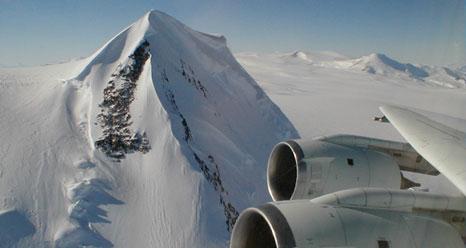NASA's DC-8 airborne science laboratory has returned to the United States after completing its Fall 2011 Operation IceBridge campaign over Antarctica.
News
Scientists Prepare for Coming ATTREX Climate Study

Multi-year NASA Airborne Science Program campaign to study the humidity and chemical composition of the tropical tropopause over the Pacific Ocean in 2013-2014.
NASA's Operation IceBridge Reaps Data Bonanza
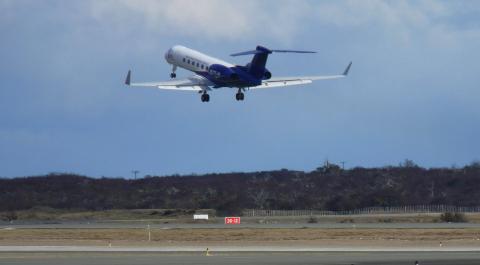
Thanks to good weather, NASA's DC-8 flying lab and NCAR's G-V are maintaining a high flight rate during Fall 2011 Operation IceBridge campaign.
NASA Continues Critical Survey of Antarctica's Changing Ice

Scientists with NASA's Operation IceBridge airborne research campaign began the mission's third year of surveys over the changing ice of Antarctica.
NASA Global Hawks Prepare for 2012 Hurricane Study
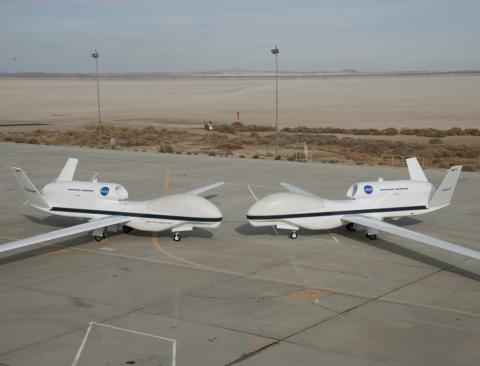
A group of environmental scientists are preparing for a multi-year NASA Airborne Science Program investigation of Atlantic hurricane formation and intensity.
NASA’s DC-8 Flying Lab Validates Laser Instruments

Scientists conducted airborne validation of four laser techniques for measuring atmospheric carbon dioxide aboard NASA’s DC-8 flying lab.
Paving the Way for Space-Based Air Pollution Sensors

About 40 % of Americans live in counties where pollution levels still regularly exceed EPA's national air quality standards. Summer heat and relentless traffic make the D.C. metropolitan area one of the top 20 smoggiest metro areas in the country.
Mission Into Ice Clouds: Q&A with MACPEX's Michael Craig

The Mid-latitude Airborne Cirrus Properties Experiment (MACPEX) is a NASA field campaign that is investigating cirrus cloud properties and the processes that affect their impact on solar radiation. The campaign is using project management services provided by the Earth Science Project Office (ESPO) at NASA’s Ames Research Center, Moffett Field, Calif., which supports NASA’s Science Mission Directorate field research.
NASA Mission Seeks to Uncover a Rainfall Mystery
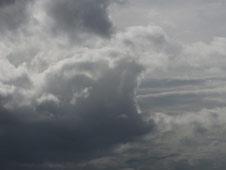
Scientists from NASA and other organizations are on a mission to unlock the mysteries of why certain clouds produce copious amounts of rain. In a field mission that is now under way, aircraft are carrying instruments above and into rain clouds. Meanwhile scientists are also getting rainfall measurements on the ground.
This field campaign provides the most comprehensive observations of rainfall in the U.S. through the use of aircraft, spacecraft, remote sensing and ground sensors.
Mission Into Ice Clouds: Q&A with MACPEX Pilot Bill Rieke
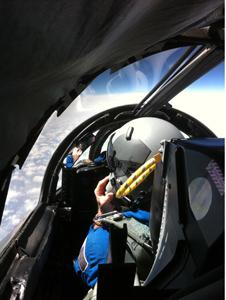
The Mid-latitude Airborne Cirrus Properties Experiment (MACPEX) is a NASA field campaign that is investigating cirrus cloud properties and the processes that affect their impact on solar radiation. The campaign uses NASA's WB-57 research aircraft based at Ellington, Texas, to conduct science flights over Oklahoma, the southeastern United States and the Gulf of Mexico this month.
Research pilot William Rieke from NASA's Johnson Space Center, Houston, has flown more than 3,500 hours in numerous aircraft, including the F/A 18 Hornet strike fighter when he was in the United States Navy. Since then, Rieke has been a flight engineer on Boeing 727's and 737-200's for a major airline. As a pilot for NASA since 2004, he has flown the NorthropT-38N Talon jet, the 747 Shuttle Carrier Aircraft, which NASA uses to transport Space Shuttle orbiters, and the WB-57.
Arctic Sea Ice Flights Near Completion
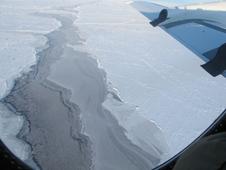
Kangerlussuaq, Greenland – Operation IceBridge, NASA's airborne mission to monitor polar ice, is amid its fourth week of flights for the Arctic 2011 campaign. Researchers and crew successfully completed flights from Thule, Greenland, to monitor sea ice and have now moved to Kangerlussuaq, Greenland to focus on flights monitoring the ice sheet.
Flying a distance of about 19,000 miles [30,000 kilometers] over the Arctic Ocean, scientists onboard the P-3 collected data during eight sea ice flights based from Thule Air Base. One additional sea ice flight remains to be flown from Kangerlussuaq.
NASA's Global Hawks Mark Year of Science Flights

NASA’s Global Hawk No. 872 soars aloft on a functional check flight of the aircraft payload system and science instruments for the Genesis and Rapid Intensification Processes (GRIP) mission in August 2010. (NASA photo / Tony Landis) This week marks the first anniversary of the NASA Global Hawk project’s initial science mission. On April 7, 2010, Global Hawk No. 872 took off from NASA’s Dryden Flight Research Center on Edwards Air Force Base, Calif., for its first science foray over the Pacific Ocean in the Global Hawk Pacific 2010 - or GloPac - science campaign.
Chicken Fat Fuel Emissions Look Cleaner, Greener

NASA recently performed emissions testing on alternative, renewable fuels for a greener and less petroleum-dependent future. The search for alternative fuels is driven by environmental concerns as well as a desire for reduced reliance on foreign sources.
NASA Airborne Science Campaign Begins Antarctic Sequel
Scientists returned this week to the Southern Hemisphere where NASA's Operation IceBridge mission is set to begin its second year of airborne surveys over Antarctica.
NASA Sensor Completes Initial Gulf Oil Spill Flights

NASA's Airborne Visible/Infrared Imaging Spectrometer (AVIRIS) instrument collected an image over the site of the Deepwater Horizon BP oil rig disaster on May 17, 2010. Crude oil on the surface appears orange to brown. Scientists are using spectroscopic methods to analyze measurements for each point in images like this one to detail the characteristics of the oil on the surface.
NASA Satellites and Aircraft Studied Hurricane Karl Before it Faded

Hurricane Karl made landfall near Veracruz, Mexico on Friday, Sept. 17 and moved inland over Mexico's rugged terrain, which took the punch out of the storm. As Karl was moving into Mexico, NASA aircraft and NASA satellites were gathering data from this storm that jumped from a tropical storm to a Category 3 hurricane the day before.

